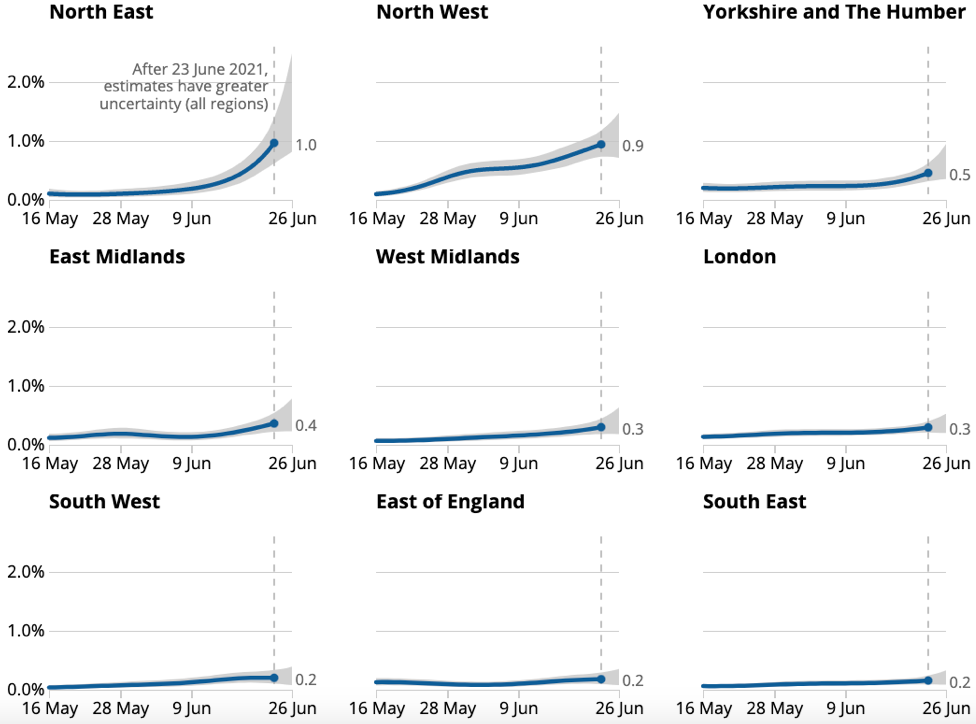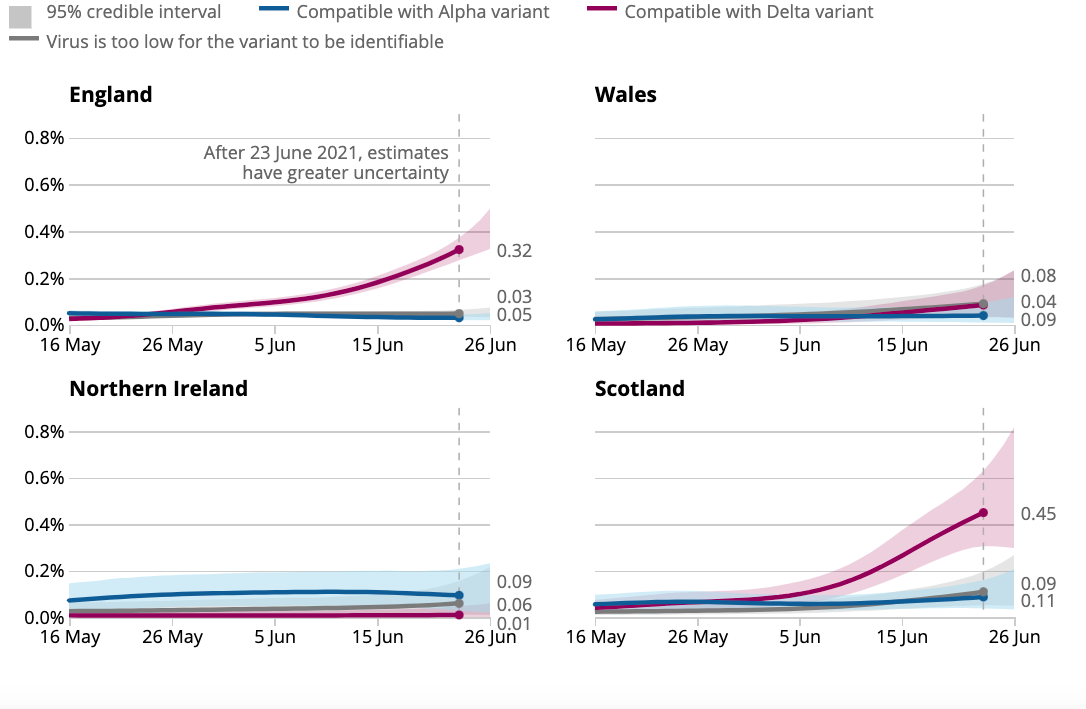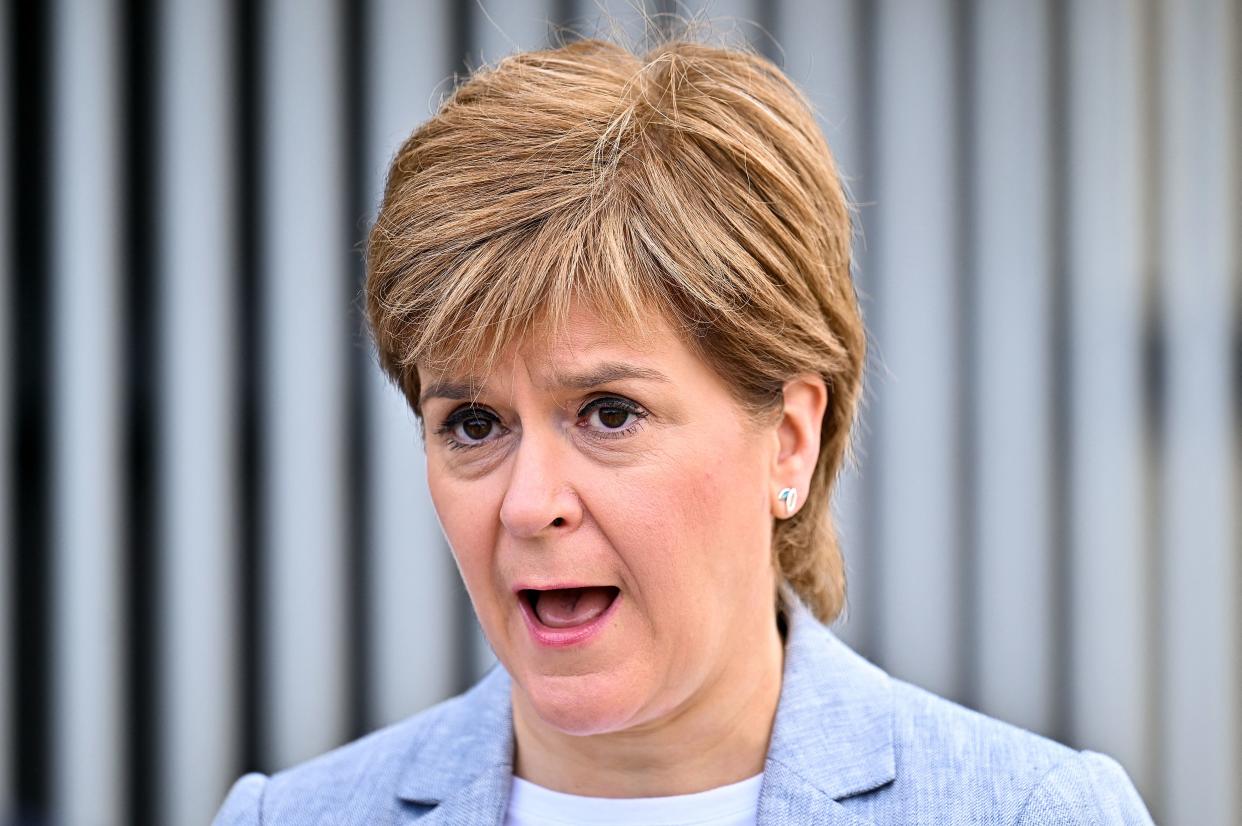Data shows six of the worst 10 Covid hotspots in Europe are in UK
After Boris Johnson announced a planned lifting of lockdown restrictions on 19 July, the prime minister has declared England should be prepared to live with coronavirus despite a rise in infections.
Social distancing guidelines – including the face mask mandate and the one metre-plus rule – are set to come to an end in less than two weeks.
Johnson has gambled on trusting the public’s judgement and the “wall of immunity” offered by vaccines, rather than laws that force people to adhere to guidelines.
However, data from the World Health Organization (WHO) shows that over half of the worst 10 Covid hotspots in the whole of Europe are in the UK – suggesting that the prevalence of the Delta variant is further ahead in the UK than the rest of the continent.

The top 10 Covid hotspots in Europe, based on Covid incidences across the last seven days, are:
Tayside, UK: 687 cases
North East, UK: 616 cases
Lothian: 574 cases
Nur-Sultan City, Kazakhstan: 496 cases
Greater Glasgow and Clyde, UK: 490 cases
Cyprus: 424 cases
Fife, UK: 422 cases
North West, UK: 411 cases
Chui, Kyrgyztan: 403 cases
Algarve, Portugal: 361 cases
The data shows that the regions in the UK where cases are at the highest are in the north east of the UK and Scotland.
The north east has the highest case number in England (616), but Scotland has four areas in the top 10 (Tayside, Lothian, Greater Glasgow and Clyde and Fife), with a combined total of 2,173 positive test results.


With the north west of England also featuring in the top 10, it shows that Covid prevalence is highest in the northern areas of the country, with southern areas not featuring in the top 10 Covid hotspots at all.
While the prime minister has said England’s Covid restrictions are likely to be torn up on 19 July, all but a handful of rules will not be ditched in Scotland until after 9 August.
However it is hoped the whole of Scotland can be placed into its lowest level of restrictions – Level 0 – on 19 July.
In Wales, an announcement on rules is not expected until 14 July – but ministers have insisted they will not be rushed into a decision about scrapping restrictions.
Baroness Morgan said the Welsh government will be “following the data rather than following the politics” when it considers whether rules can be eased over the next few weeks.
First Minister Mark Drakeford reminded people that changes announced by Johnson “will apply to England only”.
In Northern Ireland, the Stormont Executive is set to review progress on the Pathway out of Restrictions plan at its meeting on Thursday, and consider the sequencing of further relaxations.
Live music was given the green light to return from 5 July and the number of households permitted to meet outdoors at private dwellings increased from three to five, with the maximum number of people remaining at 15.
On Monday chief medical officer Sir Michael McBride said the country had entered a fourth wave and warned cases will increase rapidly as he urged people to keep following public health advice and take up the offer of a vaccine.

Last week, Hans Kluge, the regional director of WHO Europe, said a fourth wave of coronavirus could break out by the autumn.
Speaking as data showed a 10 increase in cases in Europe following weeks of decline, Kluge warned that a new Covid wave could break out before autumn because of “new variants, deficit in vaccine uptake and increased social mixing”.
Despite the data, England’s ‘Freedom Day’ is on course for 19 July – meaning a scrapping of limits on social contact and legal requirements to wear face coverings, while all remaining businesses will be allowed to reopen.

The work from home advice will also be removed, while bars and restaurants will no longer be restricted to table service.
On Wednesday, health secretary Sajid Javid said that from 16 August those who have been double-jabbed will no longer be required to self-isolate if they come into contact with someone who has tested positive for coronavirus.
However, he warned that there could be 100,000 Covid cases a day by the summer as a result of the relaxed restrictions.


